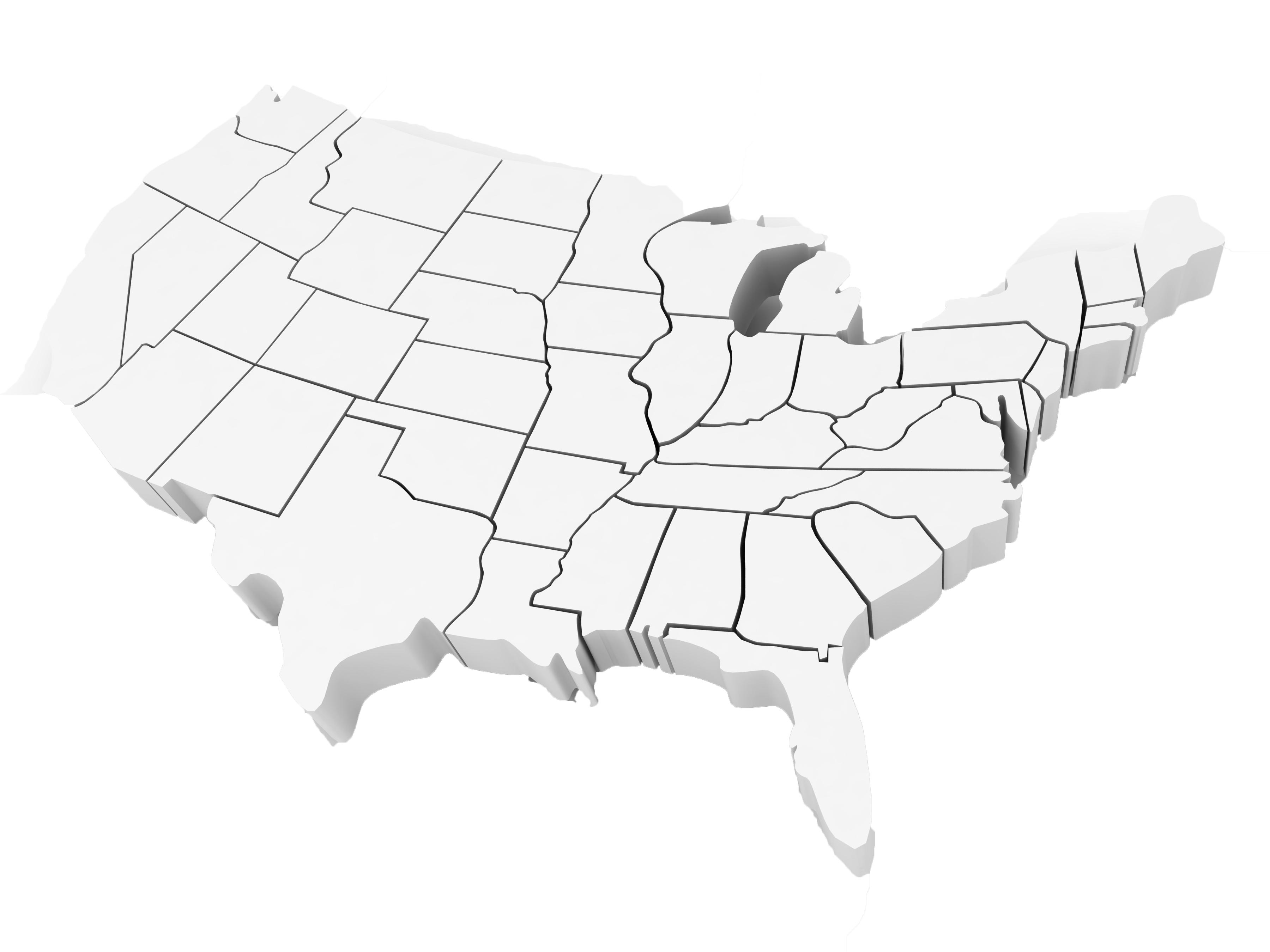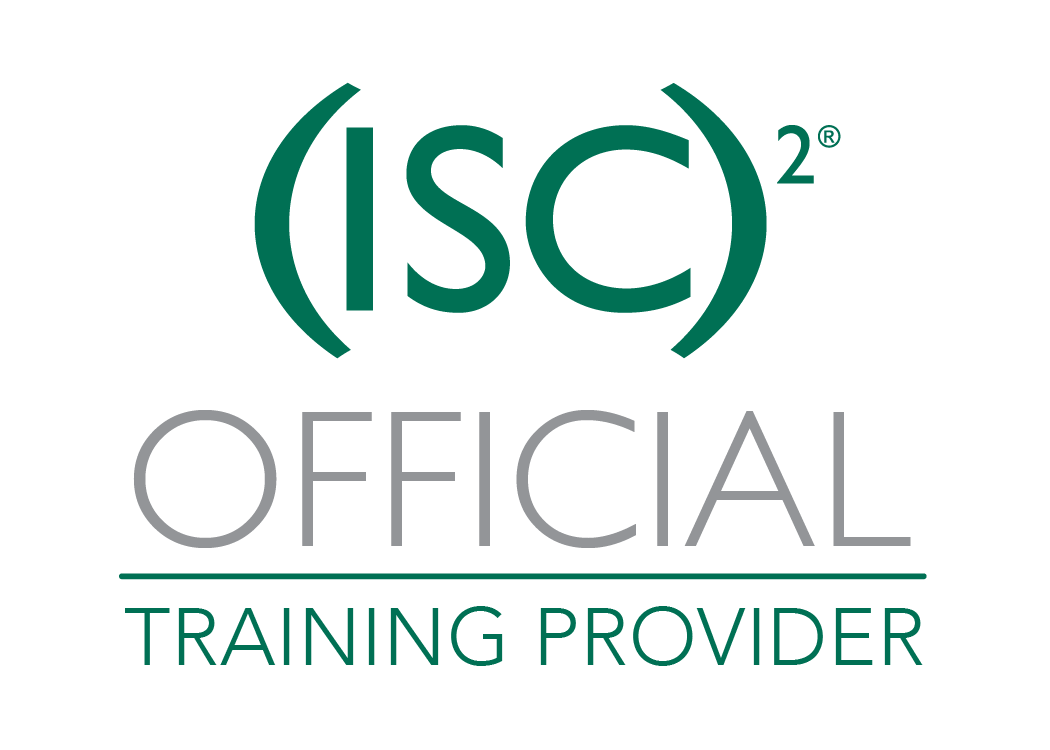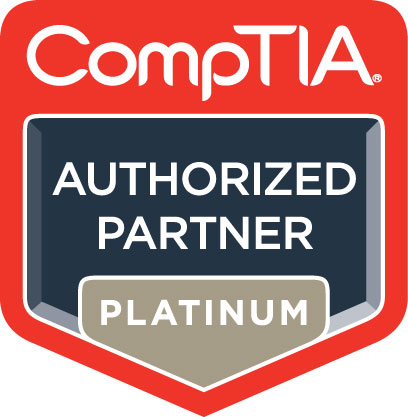Course Outline

Cisco CCNA Day
CSCO-2120 | Day | 9 DaysAs Enterprises migrate toward controller based architectures, the role and skills required of a core network engineer are evolving and more vital than ever. To prepare for this network transition, the CCNA certification will not only prepare you with the knowledge of foundational technologies, but ensure you stay relevant with skill sets needed for the adoption of next generation technologies.
To learn more about the course objectives and opportunities in the industry for CCNA certified professionals, view our Cisco CCNA Certification Info Session.
Upcoming Dates:
- Jan 26, 2026 - Feb 03, 2026
- Mar 16, 2026 - Mar 24, 2026
- May 04, 2026 - May 12, 2026
- Jul 06, 2026 - Jul 14, 2026
- Sep 14, 2026 - Sep 22, 2026

Who should take this course
The CCNA certification is for IT professionals looking to expand upon and document their existing skills in CISCO technology. This course is intended for students seeking to earn their CCNA certification and who need an expert instructor to guide them throughout the training and exam preparation process.
Course Objectives
The CCNA course helps you master the following topics:
- Networking fundamentals
- Implementing basic Ethernet LANs
- Ethernet LANs: design, VLANs, and troubleshooting
- IPv4 addressing and subnetting
- Implementing IPv4
- IPv4 design and troubleshooting
- IPv4 services: ACLs and NAT
- Network device management
- Ethernet LANs
- IPv4 routing protocols
- Wide area networks
- IPv4 services: ACLs and QoS
- IPv4 routing and troubleshooting
- Network management, SDN, and cloud computing
Course Outline
ICND1
Part I Networking Fundamentals
Chapter 1Introduction to TCP/IP Networking
Perspectives on Networking
TCP/IP Networking Model
- History Leading to TCP/IP
- Overview of the TCP/IP Networking Model
- TCP/IP Application Layer
- TCP/IP Transport Layer
- TCP/IP Network Layer
- TCP/IP Link Layer (Data Link Plus Physical)
- TCP/IP Model and Terminology
OSI Networking Model
- Comparing OSI and TCP/IP
- Describing Protocols by Referencing the OSI Layers
- OSI Layers and Their Functions
- OSI Layering Concepts and Benefits
- OSI Encapsulation Terminology
Chapter 2Fundamentals of Ethernet LANs
An Overview of LANs
- Typical SOHO LANs
- Typical Enterprise LANs
- The Variety of Ethernet Physical Layer Standards
- Consistent Behavior over All Links Using the Ethernet Data Link Layer
Building Physical Ethernet Networks with UTP
- Transmitting Data Using Twisted Pairs
- Breaking Down a UTP Ethernet Link
- UTP Cabling Pinouts for 10BASE-T and 100BASE-T
- UTP Cabling Pinouts for 1000BASE-T
Sending Data in Ethernet Networks
- Ethernet Data-Link Protocols
- Sending Ethernet Frames with Switches and Hubs
Chapter 3Fundamentals of WANs
Leased-Line WANs
- Positioning Leased Lines with LANs and Routers
- Physical Details of Leased Lines
- Data-Link Details of Leased Lines
Ethernet as a WAN Technology
- Ethernet WANs that Create a Layer 2 Service
- How Routers Route IP Packets Using Ethernet Emulation
Accessing the Internet
- The Internet as a Large WAN
- Internet Access (WAN) Links
- Digital Subscriber Line
- Cable Internet
Chapter 4Fundamentals of IPv4 Addressing and Routing
Overview of Network Layer Functions
- Network Layer Routing (Forwarding) Logic
- How Network Layer Routing Uses LANs and WANs
- IP Addressing and How Addressing Helps IP Routing
- Routing Protocols
IPv4 Addressing
- Rules for IP Addresses
- Rules for Grouping IP Addresses
- IP Subnetting
IPv4 Routing
- IPv4 Host Routing
- Router Forwarding Decisions and the IP Routing Table
IPv4 Routing Protocols
Other Network Layer Features
- Using Names and the Domain Name System
- The Address Resolution Protocol
- ICMP Echo and the ping Command
Chapter 5Fundamentals of TCP/IP Transport and Applications
TCP/IP Layer 4 Protocols: TCP and UDP
- Transmission Control Protocol
- User Datagram Protocol
TCP/IP Applications
- Uniform Resource Identifiers
- Finding the Web Server Using DNS
- Transferring Files with HTTP
- How the Receiving Host Identifies the Correct Receiving Application
Part II Implementing Basic Ethernet LANs
Chapter 6Using the Command-Line Interface
Accessing the Cisco Catalyst Switch CLI
- Cisco Catalyst Switches
- Accessing the Cisco IOS CLI
- CLI Help Features
- The debug and show Commands
Configuring Cisco IOS Software
- Configuration Submodes and Contexts
- Storing Switch Configuration Files
- Copying and Erasing Configuration Files
Chapter 7Analyzing Ethernet LAN Switching
LAN Switching Concepts
- Overview of Switching Logic
- Forwarding Known Unicast Frames
- Learning MAC Addresses
- Flooding Unknown Unicast and Broadcast Frames
- Avoiding Loops Using Spanning Tree Protocol
- LAN Switching Summary
Verifying and Analyzing Ethernet Switching
- Demonstrating MAC Learning
- Switch Interfaces
- Finding Entries in the MAC Address Table
- Managing the MAC Address Table (Aging, Clearing)
- MAC Address Tables with Multiple Switches
Chapter 8Configuring Basic Switch Management
Securing the Switch CLI
- Securing User Mode and Privileged Mode with Simple Passwords
- Securing User Mode Access with Local Usernames and Passwords
- Securing User Mode Access with External Authentication Servers
- Securing Remote Access with Secure Shell
Enabling IPv4 for Remote Access
- Host and Switch IP Settings
- Configuring IPv4 on a Switch
- Configuring a Switch to Learn Its IP Address with DHCP
- Verifying IPv4 on a Switch
Miscellaneous Settings Useful in Lab
- History Buffer Commands
- The logging synchronous, exec-timeout, and no ip domain-lookup Commands
Chapter 9Configuring Switch Interfaces
Configuring Switch Interfaces
- Configuring Speed, Duplex, and Description
- Configuring Multiple Interfaces with the interface range Command
- Administratively Controlling Interface State with shutdown
- Removing Configuration with the no Command
- Autonegotiation
Port Security
- Configuring Port Security
- Verifying Port Security
- Port Security Violation Actions
- Port Security MAC Addresses as Static and Secure but Not Dynamic
Part III Ethernet LANs: Design, VLANs, and Troubleshooting
Chapter 10Analyzing Ethernet LAN Designs
Analyzing Collision Domains and Broadcast Domains
- Ethernet Collision Domains
- Ethernet Broadcast Domains
Analyzing Campus LAN Topologies
- Two-Tier Campus Design (Collapsed Core)
- Three-Tier Campus Design (Core)
- Topology Design Terminology
Analyzing LAN Physical Standard Choices
- Ethernet Standards
- Choosing the Right Ethernet Standard for Each Link
- Wireless LANs Combined with Wired Ethernet
Chapter 11Implementing Ethernet Virtual LANs
Virtual LAN Concepts
- Creating Multiswitch VLANs Using Trunking
- Forwarding Data Between VLANs
VLAN and VLAN Trunking Configuration and Verification
- Creating VLANs and Assigning Access VLANs to an Interface
- VLAN Trunking Protocol
- VLAN Trunking Configuration
- Implementing Interfaces Connected to Phones
Chapter 12Troubleshooting Ethernet LANs
Perspectives on Applying Troubleshooting Methodologies
- Troubleshooting on the Exams
- A Deeper Look at Problem Isolation
- Troubleshooting as Covered in This Book
Analyzing Switch Interface Status and Statistics
- Interface Status Codes and Reasons for Nonworking States
- Interface Speed and Duplex Issues
- Common Layer 1 Problems on Working Interfaces
Predicting Where Switches Will Forward Frames
- Predicting the Contents of the MAC Address Table
- Analyzing the Forwarding Path
Analyzing Port Security Operations on an Interface
- Troubleshooting Shutdown Mode and Err-disabled Recovery
- Troubleshooting Restrict and Protect Modes
Analyzing VLANs and VLAN Trunks
- Ensuring That the Right Access Interfaces Are in the Right VLANs
- Access VLANs Not Being Defined
- Access VLANs Being Disabled
- Mismatched Trunking Operational States
Part IV IP Version 4 Addressing and Subnetting
Chapter 13 Perspectives on IPv4 Subnetting
Introduction to Subnetting
- Subnetting Defined Through a Simple Example
- Operational View Versus Design View of Subnetting
Analyze Subnetting and Addressing Needs
- Rules About Which Hosts Are in Which Subnet
- Determining the Number of Subnets
- Determining the Number of Hosts per Subnet
- One Size Subnet Fits All Or Not
Make Design Choices
- Choose a Classful Network
- Choose the Mask
- Build a List of All Subnets
Plan the Implementation
- Assigning Subnets to Different Locations
- Choose Static and Dynamic Ranges per Subnet
Chapter 14Analyzing Classful IPv4 Networks
Classful Network Concepts
- IPv4 Network Classes and Related Facts
- Number of Hosts per Network
- Deriving the Network ID and Related Numbers
- Unusual Network IDs and Network Broadcast Addresses
Practice with Classful Networks
- Practice Deriving Key Facts Based on an IP Address
- Practice Remembering the Details of Address Classes
Chapter 15Analyzing Subnet Masks
Subnet Mask Conversion
- Three Mask Formats
- Converting Between Binary and Prefix Masks
- Converting Between Binary and DDN Masks
- Converting Between Prefix and DDN Masks
- Practice Converting Subnet Masks
Identifying Subnet Design Choices Using Masks
- Masks Divide the Subnet\'s Addresses into Two Parts
- Masks and Class Divide Addresses into Three Parts
- Classless and Classful Addressing
- Calculations Based on the IPv4 Address Format
- Practice Analyzing Subnet Masks
Chapter 16Analyzing Existing Subnets
Defining a Subnet
- An Example with Network 172.16.0.0 and Four Subnets
- Subnet ID Concepts
- Subnet Broadcast Address
- Range of Usable Addresses
Analyzing Existing Subnets: Binary
- Finding the Subnet ID: Binary
- Finding the Subnet Broadcast Address: Binary
- Binary Practice Problems
- Shortcut for the Binary Process
- Brief Note About Boolean Math
- Finding the Range of Addresses
Analyzing Existing Subnets: Decimal
- Analysis with Easy Masks
- Predictability in the Interesting Octet
- Finding the Subnet ID: Difficult Masks
- Finding the Subnet Broadcast Address: Difficult Masks
Practice Analyzing Existing Subnets
- A Choice: Memorize or Calculate
Part V Implementing IPv4
Chapter 17Operating Cisco Routers
Installing Cisco Routers
- Installing Enterprise Routers
- Installing Internet Access Routers
Enabling IPv4 Support on Cisco Router Interfaces
- Accessing the Router CLI
Router Interfaces
- Interface Status Codes
- Router Interface IP Addresses
- Bandwidth and Clock Rate on Serial Interfaces
Router Auxiliary Port
Chapter 18Configuring IPv4 Addresses and Static Routes
IP Routing
- IPv4 Routing Process Reference
- An Example of IP Routing
Configuring IP Addresses and Connected Routes
- Connected Routes and the ip address Command
- The ARP Table on a Cisco Router
- Routing Between Subnets on VLANs
Configuring Static Routes
- Static Route Configuration
- Static Host Routes
- Static Routes with No Competing Routes
- Static Routes with Competing Routes
- Static Default Routes
- Troubleshooting Static Routes
Chapter 19Learning IPv4 Routes with RIPv2
RIP and Routing Protocol Concepts
- History of Interior Gateway Protocols
- Comparing IGPs
- Distance Vector Basics
- Summarizing RIPv2 Features
Core RIPv2 Configuration and Verification
- Configuring Core RIPv2 Features
- RIPv2 Verification
Optional RIPv2 Configuration and Verification
- Controlling RIP Updates with the passive-interface Command
- Supporting Multiple Equal-Cost Routes with Maximum Paths
- Understanding Autosummarization and Discontiguous Classful Networks
- Verifying Optional RIP Features
- RIPv2 Default Routes
Troubleshooting RIPv2
- Symptoms with Missing and Incorrect network Commands
- Issues Related to Passive Interfaces
- Issues Related to auto-summary
- RIP Issues Caused by Other Router Features
- Summary of RIP Troubleshooting Issues
Chapter 20DHCP and IP Networking on Hosts
Implementing and Troubleshooting DHCP
- DHCP Concepts
- DHCP Server Configuration on Routers
- IOS DHCP Server Verification
- Troubleshooting DHCP Services
Verifying Host IPv4 Settings
- IP Address and Mask Configuration
- Name Resolution with DNS
- Default Routers
IPv4 Address Types
- Review of Unicast (Class A, B, and C) IP Addresses
- IP Broadcast Addresses
- IPv4 Multicast Addresses (Class D Addresses)
- Comparing and Contrasting IP Address Types
Part VI IPv4 Design and Troubleshooting
Chapter 21Subnet Design
Choosing the Mask(s) to Meet Requirements
- Review: Choosing the Minimum Number of Subnet and Host Bits
- No Masks Meet Requirements
- One Mask Meets Requirements
- Multiple Masks Meet Requirements
- The Formal Process
- Practice Choosing Subnet Masks
Finding All Subnet IDs
- First Subnet ID: The Zero Subnet
- Finding the Pattern Using the Magic Number
- A Formal Process with Less Than 8 Subnet Bits
- Finding All Subnets with Exactly 8 Subnet Bits
- Finding All Subnets with More Than 8 Subnet Bits
- Practice Finding All Subnet IDs
Chapter 22Variable-Length Subnet Masks
VLSM Concepts and Configuration
- Classless and Classful Routing Protocols
- VLSM Configuration and Verification
Finding VLSM Overlaps
- Designing Subnetting Plans with VLSM
- An Example of Finding a VLSM Overlap
- Practice Finding VLSM Overlaps
Adding a New Subnet to an Existing VLSM Design
- An Example of Adding a New VLSM Subnet
Chapter 23IPv4 Troubleshooting Tools
Problem Isolation Using the ping Command
- Ping Command Basics
- Strategies and Results When Testing with the ping Command
- Using Ping with Names and with IP Addresses
Problem Isolation Using the traceroute Command
- traceroute Basics
- Using traceroute to Isolate the Problem to Two Routers
Telnet and SSH
- Common Reasons to Use the IOS Telnet and SSH Client
- IOS Telnet and SSH Examples
Chapter 24Troubleshooting IPv4 Routing
Problems Between the Host and the Default Router
- Root Causes Based on a Host\'s IPv4 Settings
- Root Causes Based on the Default Router\'s Configuration
Problems with Routing Packets Between Routers
- IP Forwarding by Matching the Most Specific Route
- Routing Problems Caused by Incorrect Addressing Plans
- Pointers to Related Troubleshooting Topics
Part VII IPv4 Services: ACLs and NAT
Chapter 25Basic IPv4 Access Control Lists
IPv4 Access Control List Basics
- ACL Location and Direction
- Matching Packets
- Taking Action When a Match Occurs
- Types of IP ACLs
Standard Numbered IPv4 ACLs
- List Logic with IP ACLs
- Matching Logic and Command Syntax
- Implementing Standard IP ACLs
- Troubleshooting and Verification Tips
Practice Applying Standard IP ACLs
- Practice Building access-list Commands
- Reverse Engineering from ACL to Address Range
Chapter 26Advanced IPv4 Access Control Lists
Extended Numbered IP Access Control Lists
- Matching the Protocol, Source IP, and Destination IP
- Matching TCP and UDP Port Numbers
- Extended IP ACL Configuration
- Practice Building access-list Commands
Named ACLs and ACL Editing
- Named IP Access Lists
- Editing ACLs Using Sequence Numbers
- Numbered ACL Configuration Versus Named ACL Configuration
- ACL Implementation Considerations
Troubleshooting with IPv4 ACLs
- Analyzing ACL Behavior in a Network
- ACL Interactions with Router-Generated Packets
Chapter 27Network Address Translation
Perspectives on IPv4 Address Scalability
- CIDR
- Private Addressing
Network Address Translation Concepts
- Static NAT
- Dynamic NAT
- Overloading NAT with Port Address Translation
NAT Configuration and Troubleshooting
- Static NAT Configuration
- Dynamic NAT Configuration
- Dynamic NAT Verification
- NAT Overload (PAT) Configuration
- NAT Troubleshooting
Part VIII IP Version 6
Chapter 28Fundamentals of IP Version 6
- Introduction to IPv6
- IPv6 Addressing Formats and Conventions
Chapter 29IPv6 Addressing and Subnetting
Global Unicast Addressing Concepts
- A Brief Review of Public and Private IPv4 Addresses
- The IPv6 Global Routing Prefix
- Address Ranges for Global Unicast Addresses
- IPv6 Subnetting Using Global Unicast Addresses
- Assigning Addresses to Hosts in a Subnet
Unique Local Unicast Addresses
- Subnetting with Unique Local IPv6 Addresses
- The Need for Globally Unique Local Addresses
Chapter 30Implementing IPv6 Addressing on Routers
Implementing Unicast IPv6 Addresses on Routers
- Static Unicast Address Configuration
- Dynamic Unicast Address Configuration
Special Addresses Used by Routers
- Link-Local Addresses
- IPv6 Multicast Addresses
- Miscellaneous IPv6 Addresses
- IPv6 Addressing Configuration Summary
Chapter 31Implementing IPv6 Addressing on Hosts
The Neighbor Discovery Protocol
- Discovering Routers with NDP RS and RA
- Discovering Addressing Info for SLAAC with NDP RS and RA
- Discovering Neighbor Link Addresses with NDP NS and NA
- Discovering Duplicate Addresses Using NDP NS and NA
- NDP Summary
Dynamic Configuration of Host IPv6 Settings
- Dynamic Configuration Using Stateful DHCP and NDP
- Using Stateless Address Auto Configuration
Troubleshooting IPv6 Addressing
- Verifying Host IPv6 Connectivity from Hosts
- Verifying Host Connectivity from Nearby Routers
Chapter 32Implementing IPv6 Routing
Connected and Local IPv6 Routes
- Rules for Connected and Local Routes
- Example of Connected IPv6 Routes
- Examples of Local IPv6 Routes
Static IPv6 Routes
- Static Routes Using the Outgoing Interface
- Static Routes Using Next-Hop IPv6 Address
- Static Default Routes
- Static IPv6 Host Routes
- Floating Static IPv6 Routes
- Default Routes with SLAAC on Router Interfaces
- Troubleshooting Static IPv6 Routes
Part IX Network Device Management
Chapter 33Device Management Protocols
System Message Logging (Syslog)
- Sending Messages in Real Time to Current Users
- Storing Log Messages for Later Review
- Log Message Format
- Log Message Severity Levels
- Configuring and Verifying System Logging
- The debug Command and Log Messages
Network Time Protocol (NTP)
- Setting the Time and Timezone
- Implementing NTP Clients, Servers, and Client/Server Mode
- NTP Using a Loopback Interface for Better Availability
Analyzing Topology Using CDP and LLDP
- Examining Information Learned by CDP
- Configuring and Verifying CDP Itself
- Implementing Link Layer Discovery Protocol
Chapter 34Device Security Features
Securing IOS Passwords
- Encrypting Older IOS Passwords with service password-encryption
- Encoding the Enable Passwords with Hashes
- Hiding the Passwords for Local Usernames
Cisco Device Hardening
- Configuring Login Banners
- Securing Unused Switch Interfaces
- Controlling Telnet and SSH Access with ACLs
- Firewalls
Chapter 35Managing IOS Files
Managing Cisco IOS Images and Upgrades
- The IOS File System
- Upgrading IOS Images
- The Cisco IOS Software Boot Sequence
Password Recovery
- The General Ideas Behind Cisco Password Recovery/Reset
- A Specific Password Reset Example
Managing Configuration Files
- Copying and Erasing Configuration Files
- Initial Configuration (Setup Mode)
Chapter 36IOS License Management
IOS Packaging
- IOS Images per Model, Series, and per Software Version/Release
- Original Packaging: One IOS Image per Feature Set Combination
- New IOS Packaging: One Universal Image with All Feature Sets
IOS Software Activation with Universal Images
- The Future: Cisco ONE Licensing
Managing Software Activation with Cisco License Manager
- Manually Activating Software Using Licenses
- Example of Manually Activating a License
- Right-to-Use Licenses
ICND2
Part I Ethernet LANs
Chapter 1Implementing Ethernet Virtual LANs
Virtual LAN Concepts
- Creating Multiswitch VLANs Using Trunking
- Forwarding Data Between VLANs
VLAN and VLAN Trunking Configuration and Verification
- Creating VLANs and Assigning Access VLANs to an Interface
- VLAN Trunking Protocol
- VLAN Trunking Configuration
- Implementing Interfaces Connected to Phones
Chapter 2Spanning Tree Protocol Concepts
Spanning Tree Protocol (IEEE 802.1D)
- The Need for Spanning Tree
- What IEEE 802.1D Spanning Tree Does
- How Spanning Tree Works
- Influencing and Changing the STP Topology
Rapid STP (IEEE 802.1w) Concepts
- Comparing STP and RSTP
- RSTP and the Alternate (Root) Port Role
- RSTP States and Processes
- RSTP and the Backup (Designated) Port Role
- RSTP Port Types
Optional STP Features
- EtherChannel
- PortFast
- BPDU Guard
Chapter 3Spanning Tree Protocol Implementation
Implementing STP
- Setting the STP Mode
- Connecting STP Concepts to STP Configuration Options
- Verifying STP Operation
- Configuring STP Port Costs
- Configuring Priority to Influence the Root Election
Implementing Optional STP Features
- Configuring PortFast and BPDU Guard
- Configuring EtherChannel
Implementing RSTP
- Identifying the STP Mode on a Catalyst Switch
- RSTP Port Roles
- RSTP Port States
- RSTP Port Types
Chapter 4LAN Troubleshooting
Troubleshooting STP
- Determining the Root Switch
- Determining the Root Port on Nonroot Switches
- Determining the Designated Port on Each LAN Segment
- STP Convergence
Troubleshooting Layer 2 EtherChannel
- Incorrect Options on the channel-group Command
- Configuration Checks Before Adding Interfaces to EtherChannels
Analyzing the Switch Data Plane Forwarding
- Predicting STP Impact on MAC Tables
- Predicting EtherChannel Impact on MAC Tables
- Choosing the VLAN of Incoming Frames
Troubleshooting VLANs and VLAN Trunks
- Access VLAN Configuration Incorrect
- Access VLANs Undefined or Disabled
- Mismatched Trunking Operational States
- Mismatched Supported VLAN List on Trunks
- Mismatched Native VLAN on a Trunk
Chapter 5VLAN Trunking Protocol
VLAN Trunking Protocol (VTP) Concepts
- Basic VTP Operation
- VTP Version 1 Versus Version 2
- VTP Pruning
- Summary of VTP Features
VTP Configuration and Verification
- Using VTP: Configuring Servers and Clients
- Verifying Switches Synchronized Databases
- Storing the VTP and Related Configuration
- Avoiding Using VTP
VTP Troubleshooting
- Determining Why VTP Is Not Synchronizing
- Common Rejections When Configuring VTP
- Problems When Adding Switches to a Network
Chapter 6Miscellaneous LAN Topics
Securing Access with IEEE 802.1x
AAA Authentication
- AAA Login Process
- TACACS+ and RADIUS Protocols
- AAA Configuration Examples
DHCP Snooping
- DHCP Snooping Basics
- An Example DHCP-based Attack
- How DHCP Snooping Works
- Summarizing DHCP Snooping Features
Switch Stacking and Chassis Aggregation
- Traditional Access Switching Without Stacking
- Switch Stacking of Access Layer Switches
- Switch Stack Operation as a Single Logical Switch
- Cisco FlexStack and FlexStack-Plus
- Chassis Aggregation
Part II IPv4 Routing Protocols
Chapter 7Understanding OSPF Concepts
Comparing Dynamic Routing Protocol Features
- Routing Protocol Functions
- Interior and Exterior Routing Protocols
- Comparing IGPs
- Administrative Distance
OSPF Concepts and Operation
- OSPF Overview
- Becoming OSPF Neighbors
- Exchanging the LSDB Between Neighbors
- Calculating the Best Routes with SPF
OSPF Area Design
- OSPF Areas
- How Areas Reduce SPF Calculation Time
- OSPF Area Design Advantages
Chapter 8Implementing OSPF for IPv4
Implementing Single-Area OSPFv2
- OSPF Single-Area Configuration
- Matching with the OSPF network Command
- Verifying OSPFv2 Single Area
- Configuring the OSPF Router ID
- OSPF Passive Interfaces
Implementing Multiarea OSPFv2
- Single-Area Configurations
- Multiarea Configuration
- Verifying the Multiarea Configuration
Additional OSPF Features
- OSPF Default Routes
- OSPF Metrics (Cost)
- OSPF Load Balancing
- OSPFv2 Interface Configuration
Chapter 9Understanding EIGRP Concepts
EIGRP and Distance Vector Routing Protocols
- Introduction to EIGRP
- Basic Distance Vector Routing Protocol Features
- EIGRP as an Advanced DV Protocol
EIGRP Concepts and Operation
- EIGRP Neighbors
- Exchanging EIGRP Topology Information
- Calculating the Best Routes for the Routing Table
- EIGRP Convergence
Chapter 10Implementing EIGRP for IPv4
Core EIGRP Configuration and Verification
- EIGRP Configuration
- Configuring EIGRP Using a Wildcard Mask
- Verifying EIGRP Core Features
EIGRP Metrics, Successors, and Feasible Successors
- Viewing the EIGRP Topology Table
- Examining the Metric Components
Other EIGRP Configuration Settings
- Load Balancing Across Multiple EIGRP Routes
- Tuning the EIGRP Metric Calculation
- Autosummarization and Discontiguous Classful Networks
Chapter 11Troubleshooting IPv4 Routing Protocols
Perspectives on Troubleshooting Routing Protocol Problems
Interfaces Enabled with a Routing Protocol
- EIGRP Interface Troubleshooting
- OSPF Interface Troubleshooting
Neighbor Relationships
- EIGRP Neighbor Verification Checks
- EIGRP Neighbor Troubleshooting Example
- OSPF Neighbor Troubleshooting
- Other OSPF Issues
Chapter 12Implementing External BGP
BGP Concepts
- Advertising Routes with BGP
- Internal and External BGP
- Choosing the Best Routes with BGP
- eBGP and the Internet Edge
eBGP Configuration and Verification
- BGP Configuration Concepts
- Configuring eBGP Neighbors Using Link Addresses
- Injecting BGP Table Entries with the network Command
- Learning a Default Route from the ISP
Part III Wide-Area Networks
Chapter 13Implementing Point-to-Point WANs
Leased-Line WANs with HDLC
- Layer 1 Leased Lines
- Layer 2 Leased Lines with HDLC
- Configuring HDLC
Leased-Line WANs with PPP
- PPP Concepts
- Implementing PPP
- Implementing PPP CHAP
- Implementing PPP PAP
- Implementing Multilink PPP
Troubleshooting Serial Links
- Troubleshooting Layer 1 Problems
- Troubleshooting Layer 2 Problems
- Troubleshooting Layer 3 Problems
Chapter 14Private WANs with Ethernet and MPLS
Metro Ethernet
- Metro Ethernet Physical Design and Topology
- Ethernet WAN Services and Topologies
- Layer 3 Design Using Metro Ethernet
- Ethernet Virtual Circuit Bandwidth Profiles
Multiprotocol Label Switching (MPLS)
- MPLS VPN Physical Design and Topology
- MPLS and Quality of Service
- Layer 3 with MPLS VPN
Chapter 15Private WANs with Internet VPN
Internet Access and Internet VPN Fundamentals
- Internet Access
- Internet VPN Fundamentals
GRE Tunnels and DMVPN
- GRE Tunnel Concepts
- Configuring GRE Tunnels
- Verifying a GRE Tunnel
- Troubleshooting GRE Tunnels
- Multipoint Internet VPNs Using DMVPN
PPP over Ethernet
- PPPoE Concepts
- PPPoE Configuration
- PPPoE Verification
- PPPoE Troubleshooting
Part IV IPv4 Services: ACLs and QoS
Chapter 16Basic IPv4 Access Control Lists
IPv4 Access Control List Basics
- ACL Location and Direction
- Matching Packets
- Taking Action When a Match Occurs
- Types of IP ACLs
Standard Numbered IPv4 ACLs
- List Logic with IP ACLs
- Matching Logic and Command Syntax
- Implementing Standard IP ACLs
- Troubleshooting and Verification Tips
Practice Applying Standard IP ACLs
- Practice Building access-list Commands
- Reverse Engineering from ACL to Address Range
Chapter 17Advanced IPv4 Access Control Lists
Extended Numbered IP Access Control Lists
- Matching the Protocol, Source IP, and Destination IP
- Matching TCP and UDP Port Numbers
- Extended IP ACL Configuration
- Practice Building access-list Commands
Named ACLs and ACL Editing
- Named IP Access Lists
- Editing ACLs Using Sequence Numbers
- Numbered ACL Configuration Versus Named ACL Configuration
- ACL Implementation Considerations
Troubleshooting with IPv4 ACLs
- Analyzing ACL Behavior in a Network
- ACL Interactions with Router-Generated Packets
Chapter 18Quality of Service (QoS)
Introduction to QoS
- QoS: Managing Bandwidth, Delay, Jitter, and Loss
- Types of Traffic
- QoS as Mentioned in This Book
- QoS on Switches and Routers
Classification and Marking
- Classification Basics
- Matching (Classification) Basics
- Classification on Routers with ACLs and NBAR
- Marking IP DSCP and Ethernet CoS
- Defining Trust Boundaries
- DiffServ Suggested Marking Values
Congestion Management (Queuing)
- Round Robin Scheduling (Prioritization)
- Low Latency Queuing
- A Prioritization Strategy for Data, Voice, and Video
Shaping and Policing
- Policing
- Shaping
Congestion Avoidance
- TCP Windowing Basics
- Congestion Avoidance Tools
Part V IPv4 Routing and Troubleshooting
Chapter 19IPv4 Routing in the LAN
VLAN Routing with Router 802.1Q Trunks
- Configuring ROAS
- Verifying ROAS
- Troubleshooting ROAS
VLAN Routing with Layer 3 Switch SVIs
- Configuring Routing Using Switch SVIs
- Verifying Routing with SVIs
- Troubleshooting Routing with SVIs
VLAN Routing with Layer 3 Switch Routed Ports
- Implementing Routed Interfaces on Switches
- Implementing Layer 3 EtherChannels
- Troubleshooting Layer 3 EtherChannels
Chapter 20Implementing HSRP for First-Hop Routing
FHRP and HSRP Concepts
- The Need for Redundancy in Networks
- The Need for a First Hop Redundancy Protocol
- The Three Solutions for First-Hop Redundancy
- HSRP Concepts
Implementing HSRP
- Configuring and Verifying Basic HSRP
- HSRP Active Role with Priority and Preemption
- HSRP Versions
Troubleshooting HSRP
- Checking HSRP Configuration
- Symptoms of HSRP Misconfiguration
Chapter 21Troubleshooting IPv4 Routing
Problems Between the Host and the Default Router
- Root Causes Based on a Host\'s IPv4 Settings
- Root Causes Based on the Default Router\'s Configuration
Problems with Routing Packets Between Routers
- IP Forwarding by Matching the Most Specific Route
- Routing Problems Caused by Incorrect Addressing Plans
- Pointers to Related Troubleshooting Topics
Part VI IPv6
Chapter 22IPv6 Routing Operation and Troubleshooting
Normal IPv6 Operation
- Unicast IPv6 Addresses and IPv6 Subnetting
- Assigning Addresses to Hosts
- Router Address and Static Route Configuration
- Verifying IPv6 Connectivity
Troubleshooting IPv6
- Pings from the Host Work Only in Some Cases
- Pings Fail from a Host to Its Default Router
- Problems Using Any Function That Requires DNS
- Host Is Missing IPv6 Settings: Stateful DHCP Issues
- Host Is Missing IPv6 Settings: SLAAC Issues
- Traceroute Shows Some Hops, But Fails
- Routing Looks Good, But Traceroute Still Fails
Chapter 23 Implementing OSPF for IPv6
OSPFv3 for IPv6 Concepts
- IPv6 Routing Protocol Versions and Protocols
- Two Options for Implementing Dual Stack with OSPF
- OSPFv2 and OSPFv3 Internals
OSPFv3 Configuration
- Basic OSPFv3 Configuration
- Other OSPFv3 Configuration Settings
OSPFv3 Verification and Troubleshooting
- OSPFv3 Interfaces
- OSPFv3 Neighbors
- OSPFv3 LSDB and LSAs
- The Issue of IPv6 MTU
- OSPFv3 Metrics and IPv6 Routes
Chapter 24 Implementing EIGRP for IPv6
EIGRP for IPv6 Configuration
- EIGRP for IPv6 Configuration Basics
- EIGRP for IPv6 Configuration Example
- Other EIGRP for IPv6 Configuration Settings
EIGRP for IPv6 Verification and Troubleshooting
- EIGRP for IPv6 Interfaces
- EIGRP for IPv6 Neighbors
- EIGRP for IPv6 Topology Database
- EIGRP for IPv6 Routes
Chapter 25IPv6 Access Control Lists
IPv6 Access Control List Basics
- Similarities and Differences Between IPv4 and IPv6 ACLs
- ACL Location and Direction
- IPv6 Filtering Policies
- ICMPv6 Filtering Caution
- Capabilities of IPv6 ACLs
- Limitations of IPv6 ACLs
Configuring Standard IPv6 ACLs
Configuring Extended IPv6 ACLs
- Examples of Extended IPv6 ACLs
- Practice Building ipv6 access-list Commands
Other IPv6 ACL Topics
- Implicit IPv6 ACL Rules
- IPv6 Management Control ACLs
Part VII Miscellaneous
Chapter 26 Network Management
Simple Network Management Protocol
- SNMP Concepts
- Implementing SNMP Version 2c
- Implementing SNMP Version 3
IP Service Level Agreement
- An Overview of IP SLA
- Basic IP SLA ICMP-Echo Configuration
- Troubleshooting Using IP SLA Counters
- Troubleshooting Using IP SLA History
SPAN
- SPAN Concepts
- Configuring Local SPAN
- SPAN Session Parameters for Troubleshooting
Chapter 27 Cloud Computing
Cloud Computing Concepts
- Server Virtualization
- Cloud Computing Services
- Cloud and the As a Service Model
WAN Traffic Paths to Reach Cloud Services
- Enterprise WAN Connections to Public Cloud
- A Scenario: Branch Offices and the Public Cloud
Virtual Network Functions and Services
- Virtual Network Functions: Firewalls and Routers
- DNS Services
- Address Assignment Services and DHCP
- NTP
Chapter 28 SDN and Network Programmability
SDN and Network Programmability Basics
- The Data, Control, and Management Planes
- Controllers and Network Architecture
- SDN Architecture Summary
Examples of Network Programmability and SDN
- Open SDN and OpenFlow
- The Cisco Application Centric Infrastructure
- The Cisco APIC Enterprise Module
- Comparing the Three Examples
Cisco APIC-EM Path Trace ACL Analysis Application
- APIC-EM Path Trace App
- APIC-EM Path Trace ACL Analysis Tool Timing





















